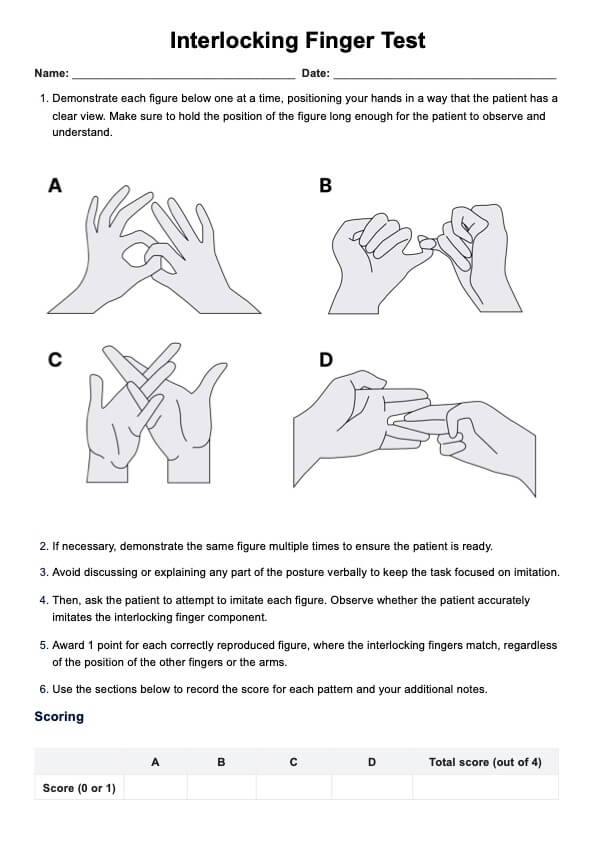To perform the test, patients are instructed to imitate the four interlocking finger figures shown by the examiner. The examiner will demonstrate each figure individually, ensuring patients can clearly see the actions. The figures are uncommon and lack symbolic meaning to focus solely on imitation. The examiner will continue to present the figure until the patient feels confident, they have accurately reproduced it.

Interlocking Finger Test
Get access to a free Interlocking Finger Test template. Use our valuable PDF as an initial bedside screening test for parietal lobe dysfunction.
Interlocking Finger Test Template
Commonly asked questions
Interlocking fingers is not a diagnostic indicator of any specific condition. However, difficulty in completing the interlocking finger test may indicate impaired visuospatial skills and coordination, which can be associated with parietal lobe dysfunction.
The finger-tapping test is a widely used quantitative assessment tool designed to evaluate motor performance in the upper extremities. This task involves a complex motion influenced by external stimuli, mood, and health status.
EHR and practice management software
Get started for free
*No credit card required
Free
$0/usd
Unlimited clients
Telehealth
1GB of storage
Client portal text
Automated billing and online payments











